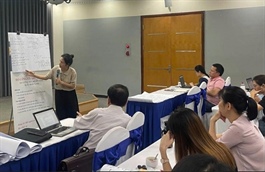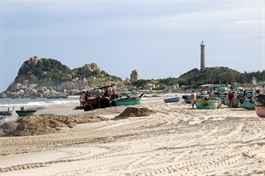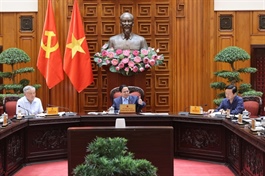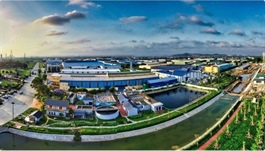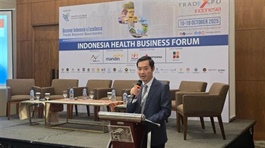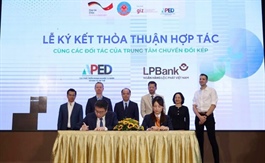Clear rules are keys to unlocking Việt Nam’s carbon credit potential
Clear rules are keys to unlocking Việt Nam’s carbon credit potential
Clarity and predictability in regulations will be critical to making Việt Nam’s carbon market credible and attractive to global investors.
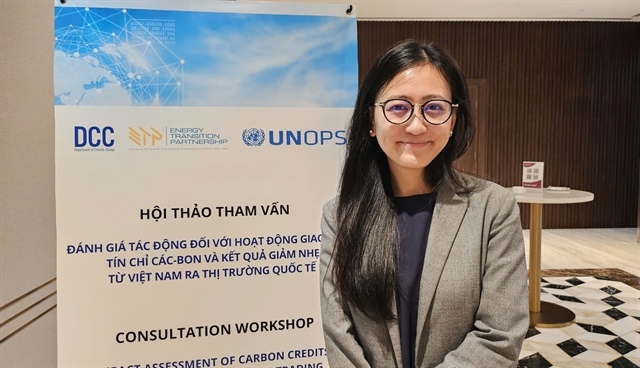
Roxanne Tan, international carbon market expert at South Pole. — VNS Photo Ly Ly Cao |
Việt Nam is entering a pivotal phase in its climate policy as it prepares to launch a domestic carbon market and engage in international carbon trading under Article 6 of the Paris Agreement. Done right, this move could not only finance the country’s national climate targets but also position Việt Nam as a regional leader in carbon markets.
Success, however, depends heavily on the design of a robust governance framework that balances environmental integrity, national interest, and investor confidence.
On the sidelines of a recent consultation workshop in Hà Nội, Việt Nam News reporter Ly Ly Cao spoke to Roxanne Tan, international carbon market expert at South Pole, to explore her perspectives on the risks, opportunities and lessons Việt Nam can draw from other countries.
Can you share a successful story from other countries that Việt Nam can learn from?
One notable example is the Bangkok E-Bus Programme in Thailand. South Pole helped develop this mitigation activity, which became the first in Southeast Asia to be authorised towards another country’s Nationally Determined Contribution (NDC). Up to 500,000 carbon credits will be transferred to Switzerland.
The first transaction has already taken place between Switzerland’s Click Foundation and the Thai bus company operating the project. This success illustrates how a clear regulatory pathway—covering authorisation, ownership and transfer of credits—can create confidence among both host country regulators and international buyers.
For Việt Nam, this shows that when the government provides certainty, private actors are willing to invest and projects can move quickly from design to implementation.
What common risks should Việt Nam avoid when establishing its carbon market?
The main risk is regulatory uncertainty. If the governance framework is vague, unpredictable or incomplete, investors will hesitate to engage in Article 6 ITMO projects. We have seen this happen in other countries where project developers faced long delays and unclear approval procedures.
To avoid these pitfalls, Việt Nam must go beyond broad principles. The government should provide detailed procedures, clear timelines, and transparent criteria.
Investors need to know how long they will wait for approvals, what benchmarks will be applied and whether authorisation decisions are likely to be positive or negative. Without this predictability, there is little incentive for businesses to commit significant capital to projects that often take years to develop.
What recommendations would you give for Việt Nam’s carbon market regulation?
It is the government’s sovereign right to decide its own rules. But from an investor’s perspective, balance is key.
If fees are too high or if processes are too complex and slow, Việt Nam may struggle to attract projects compared with other countries in the region.
This is why international benchmarking is valuable. Countries like Ghana, Rwanda, Cambodia, Chile and Thailand have already established Article 6 frameworks. Some of them use a strategic positive list to define which activities are eligible.
Others retain a portion of mitigation outcomes for their NDCs or introduce Corresponding Adjustment (CA) fees to generate government revenue. These measures ensure host countries benefit while also providing investors with a predictable environment. Việt Nam can learn from these models to strike its own balance.
Based on international experience, what does a robust governance framework look like?
A strong framework has three main features: alignment with the NDC, clarity and predictability, and economic optimisation.
In practice, this means three policy interventions should be considered together: a positive list of eligible mitigation activities for Article 6 authorisation, the share of mitigation outcomes retained for Việt Nam’s own NDC achievement, and transparent CA and administrative fees that are specified upfront.
Together, these elements provide certainty to project developers and investors.
This clarity is also critical for determining the pricing of ITMOs (Internationally Transferred Mitigation Outcomes). The market is highly sensitive to regulatory signals, so Việt Nam’s decisions will directly influence how competitive its carbon credits are internationally.
What should Việt Nam consider for long-term investment certainty?
One of the most important steps is to provide authorisation beyond 2030, extending into the next NDC cycle. Right now, the window to 2030 is short—only about five years. That is not enough for many large or complex projects to pay back their investment costs.
For example, developing a non-nature-based project typically takes around two years, while nature-based solutions require at least three years just for project origination and credit issuance.
If authorisation only covers the current NDC period, investors will not risk financing projects that cannot recover costs in such a short timeframe. Extending the horizon ensures 'bankability' and attracts long-term capital.
How should Việt Nam balance fees and retention rates?
Transparency is key. While some countries set CA fees or retention rates on a case-by-case basis, this creates uncertainty and complicates financial planning. Investors want clear rules to model their cash flows and risks.
By deciding fees and retention shares upfront, Việt Nam can give the market the predictability it needs to scale.
Việt Nam’s success depends on its ability to build a framework that is coherent, transparent and balanced.
The system must align with the NDC to preserve environmental integrity while also providing the clarity and predictability that investors require.
If Việt Nam can achieve this balance, it will not only secure financing for its climate goals but also establish itself as a competitive player in the international carbon market.
- 08:39 23/10/2025




